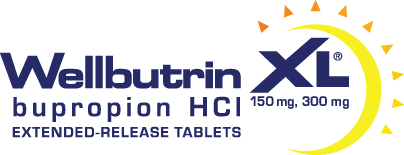Important safety information
Indication and usage
TARGRETIN® (bexarotene) capsules and gel are indicated for the treatment of cutaneous manifestations of cutaneous T-cell lymphoma (only stages 1A and 1B for gel) in patients who are refractory to at least one prior systemic therapy.
Important Safety Information
Birth defects
Because of the risk of fetal harm, TARGRETIN capsules and gel must not be given to a woman who is pregnant or who intends to become pregnant. If a woman becomes pregnant during treatment with TARGRETIN, treatment must be stopped immediately, and the woman provided appropriate counseling about the risks.
To prevent pregnancy, effective contraception must be used for one month prior to the initiation of TARGRETIN therapy, during therapy and for at least one month following discontinuation of therapy; it is recommended that two reliable forms of contraception be used simultaneously unless abstinence is the chosen method. Male patients with sexual partners who are pregnant, possibly pregnant or who could become pregnant must use condoms during treatment and for at least one month after the last dose of drug.
No more than a one month supply of TARGRETIN should be given to the patient so that the results of pregnancy testing can be assessed and counseling regarding avoidance of pregnancy and birth defects can be reinforced.
Contraindication
TARGRETIN capsules and gel are contraindicated in patients with a known serious hypersensitivity to bexarotene or other components of the product.
Warnings and precautions
Capsules
Hyperlipidemia is present in most patients treated with TARGRETIN capsules. Obtain baseline values, monitor during treatment, and manage elevations during therapy.
Acute pancreatitis, including a fatal case, has been reported in patients treated with TARGRETIN capsules. Interrupt treatment and evaluate if suspected.
Hepatotoxicity, cholestasis, and hepatic failure TARGRETIN capsules had a dose-related effect on liver chemistry tests in clinical trials, including incidence of cholestasis and liver failure.
Hypothyroidism TARGRETIN capsules induce hypothyroidism in about half of all patients; obtain baseline thyroid function tests and monitor patients during treatment.
Neutropenia Leukopenia and neutropenia occurred in clinical trials with TARGRETIN capsules; obtain complete blood counts at baseline and periodically during treatment.
Cataracts Although a causal relationship has not been established, cataracts have been observed in animal and clinical studies with TARGRETIN capsules. Refer patients who experience visual difficulties for ophthalmologic evaluation.
Hypoglycemia in Diabetes TARGRETIN capsules may cause hypoglycemia in patients using insulin, agents enhancing insulin secretions, or insulin-sensitizers.
Nursing: Discontinue nursing during treatment with TARGRETIN.
Laboratory tests including CBC, fasting lipid profile, liver function tests, and thyroid profile should be obtained prior to treatment.
CA125 assay values in ovarian cancer patients may be elevated by treatment.
Capsules and Gel
Vitamin A Patients should be advised to limit Vitamin A intake to avoid potential additive toxicity.
Photosensitivity Advise patients to minimize exposure to sun and artificial sunlight during treatment.
Gel
Patients who are applying TARGRETIN gel should not concurrently use products that contain DEET, a common component of insect repellent products.
For nursing women, a decision should be made whether to discontinue nursing or discontinue the drug, taking into account the importance of the drug to the mother.
Adverse reactions
Capsules
The most common adverse reactions (>10%) include hyperlipidemia, hypercholesteremia, headache, hypothyroidism, asthenia, leukopenia, rash, nausea, infection, peripheral edema, abdominal pain, and dry skin.
Gel
The most common adverse events reported in TARGRETIN gel clinical trials with an incidence at the application site of at least 10% were: rash, pruritus, skin disorder, and pain.
To report SUSPECTED ADVERSE REACTIONS contact customer service at 1-800-321-4576 or FDA at 1-800-FDA-1088 or visit fda.gov/medwatch.
Click here for full Prescribing Information, including Boxed Warning for TARGRETIN capsules.
Click here for full Prescribing information for TARGRETIN gel.


















